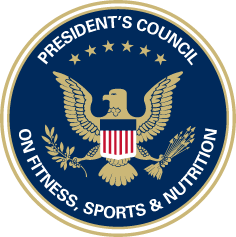Transparency is extremely important to us, so we are letting you know that we may receive a commission on some of links you click on from this page. See our disclaimer.
 As we head into the weekend, we wanted to offer — via the President's Council on Fitness, Sports & Nutrition — a series of very useful stats and facts you should know about obesity, nutrition and physical activity.
As we head into the weekend, we wanted to offer — via the President's Council on Fitness, Sports & Nutrition — a series of very useful stats and facts you should know about obesity, nutrition and physical activity.
Too many of us are obese:
- “Data from 2009-2010 indicates that over 78 million U.S. adults and about 12.5 million (16.9%) children and adolescents are obese.”
- “Recent reports project that by 2030, half of all adults (115 million adults) in the United States will be obese.”
And this obesity costs a lot:
- “Projections estimate that by 2018, obesity will cost the U.S. 21 percent of our total healthcare costs – $344 billion annually.”
- “Those who are obese have medical costs that are $1,429 more than those of normal weight on average (roughly 42% higher).”
- “The annual cost of being overweight is $524 for women and $432 for men; annual costs for being obese are even higher: $4,879 for women and $2,646 for men.”
- “Obesity is also a growing threat to national security – a surprising 27% of young Americans are too overweight to serve in our military. Approximately 15,000 potential recruits fail their physicals every year because they are unfit.”
One way to help would be to watch our diets:
- “Typical American diets exceed the recommended intake levels or limits in four categories: calories from solid fats and added sugars; refined grains; sodium; and saturated fat.”
- “Americans eat less than the recommended amounts of vegetables, fruits, whole-grains, dairy products, and oils.”
- “About 90% of Americans eat more sodium than is recommended for a healthy diet.”
- “Empty calories from added sugars and solid fats contribute to 40% of total daily calories for 2–18 year olds and half of these empty calories come from six sources: soda, fruit drinks, dairy desserts, grain desserts, pizza, and whole milk.”
Another would be to exercise more:
- “Less than 5% of adults participate in 30 minutes of physical activity each day; only one in three adults receive the recommended amount of physical activity each week.”
- “More than 80% of adults do not meet the guidelines for both aerobic and muscle-strengthening activities.”





0 Comments